 W
WList of shipwreck sites which are popular amongst scuba divers for wreck diving.
 W
WWreck diving is recreational diving where the wreckage of ships, aircraft and other artificial structures are explored. Although most wreck dive sites are at shipwrecks, there is an increasing trend to scuttle retired ships to create artificial reef sites. Diving to crashed aircraft can also be considered wreck diving. The recreation of wreck diving makes no distinction as to how the vessel ended up on the bottom.
 W
WUSS Aaron Ward (DD-483) was a Gleaves-class destroyer in the service of the United States Navy. She was the second Navy ship named in honor of Rear Admiral Aaron Ward. She sank on 7 April 1943 in a shoal near Tinete Point of Nggela Sule, Solomon Islands during Operation I-Go. Her wreck was discovered on 4 September 1994.
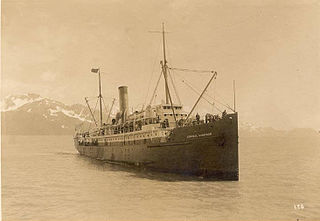 W
WThe SS Admiral Sampson was a U.S.-flagged cargo and passenger steamship that served three owners between 1898 and 1914, when it was rammed by a Canadian passenger liner and sank in Puget Sound. Following its sinking off Point No Point, the Admiral Sampson has become a notable scuba diving destination for advanced recreational divers certified to use rebreathing equipment.
 W
WSS Andrea Doria pronounced [anˈdrɛːa ˈdɔːrja], was an ocean liner for the Italian Line home-ported in Genoa, Italy, known for its sinking in 1956, where of the 1,706 passengers and crew, 1,660 were rescued, while 46 lost their lives.
 W
WSS Antilla was a Hamburg America Line (HAPAG) cargo ship that was launched in 1939 and scuttled in 1940.
 W
WUSS Atlanta (CL-51) of the United States Navy was the lead ship of the Atlanta class of eight light cruisers. She was the third Navy ship named after the city of Atlanta, Georgia. Designed to provide anti-aircraft protection for US naval task groups, Atlanta served in this capacity in the naval battles Midway and the Eastern Solomons. Atlanta was heavily damaged by Japanese and friendly gunfire in a night surface action on 13 November 1942 during the Naval Battle of Guadalcanal. The cruiser was sunk on her captain's orders in the afternoon of the same day.
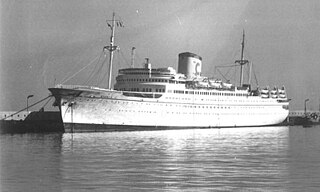 W
WThe Bianca C. was a passenger ship that sank on two occasions, the first time in France before being completed, and the second time after an explosion and fire off the island of Grenada.
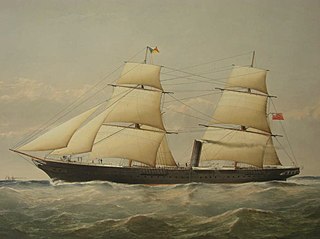 W
WSS Carnatic was a British steamship built in 1862-63 by Samuda Brothers at Cubitt Town on the Isle of Dogs, London, for the Peninsular and Oriental Steam Navigation Company (P&O). She operated on the Suez to Bombay run in the last years before the Suez Canal was opened. This route gave a fast, steamship-operated route from Britain to India, connecting with similar steamships running through the Mediterranean to Alexandria, with an overland crossing to Suez. The alternative was to sail round the Cape of Good Hope, a distance at which steam ships were not, in the early 1860s, sufficiently economical to be commercially competitive with sail.
 W
WChuuk Lagoon, previously Truk Atoll, is an atoll in the central Pacific. About 1,800 kilometres north-east of New Guinea, it is located mid-ocean at 7 degrees North latitude and is part of Chuuk State within the Federated States of Micronesia (FSM). A protective reef, 225 kilometres (140 mi) around, encloses a natural harbour 79 by 50 kilometres, with an area of 2,130 square kilometres. It has a land area of 93.07 square kilometres, with a population of 36,158 people and a maximal height of 443 m (1,453 ft). Weno city on Moen Island functions as the atoll's capital and also as the state capital and is the largest city in the FSM with its 13,700 people.
 W
WSS Clan Ranald was a two decked, turret deck ship, which sank on 31 January 1909 in the Australian state of South Australia off the coast of Yorke Peninsula near the town of Edithburgh. It is the only turret ship to have been lost in Australian waters, and therefore represents a unique part of Australia's maritime history. The bulk of crew were Asian sailors (lascars). Clan Ranald is considered one of the worst shipwrecks in South Australia (SA) where only 24 survived out of the 64 crew members.
 W
WSMS Cormoran or SMS Cormoran II was a German armed merchant raider that was originally a Russian merchant vessel named Ryazan. The ship was active in the Pacific Ocean during World War I. Built in 1909, she was captured by the German light cruiser SMS Emden on 4 August 1914 and converted into a raider at the German colony Kiautschou. She was forced to seek port at Apra Harbor on the U.S. territory of Guam on 10 August 1914. The United States, then declared neutral in the war, refused to sufficient provisions to allow Cormoran to make a German port. After the U.S. declaration of war on April 6, 1917, the Naval Governor of Guam informed Cormoran that she would be seized as a hostile combatant, prompting her crew to scuttle her.
 W
WUSS Emmons (DD-457/DMS-22) was a Gleaves-class destroyer of the United States Navy, named for Rear Admiral George F. Emmons (1811–1884).
 W
WFifi is a submerged tugboat shipwreck located approximately 8 km (5 mi) east of Al-Bander resort in Bahrain. The vessel caught fire and sank in the early 1980s. The ship was owned by Shaheen Bin Saqer bin Shaheen, founder of Awalco Marine. It was named after his only daughter Feryal, who was better known as Fifi.
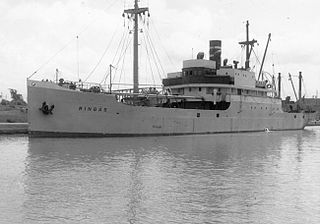 W
WFrancisco Morazan was a 1,442 GRT cargo ship that was built in 1922 as Arcadia by Deutsche Werft, Hamburg, for German owners. She was sold in 1934 and renamed Elbing. She was seized by the Allies in the River Elbe, Germany in May 1945, passed to the United Kingdom's Ministry of War Transport and renamed Empire Congress. In 1946, she was allocated to the Norwegian Government and renamed Brunes.
 W
WFujikawa Maru was a cargo ship originally built in 1938 for the Toyo Kaiun Kisen Kaisha and was requisitioned by the Imperial Japanese Navy during World War II for use as an armed aircraft transport or ferry. She was sunk in Truk Lagoon in 1944 during Operation Hailstone and is now a leading wreck diving site for scuba divers.
 W
WFumizuki was one of twelve Mutsuki-class destroyers, built for the Imperial Japanese Navy (IJN) during the 1920s. During the Pacific War, she participated in the Philippines Campaign in December 1941 and the Dutch East Indies Campaign in early 1942. In March, she was assigned to convoy escort duties in and around Malaya and the Dutch East Indies until she was transferred to Rabaul in early 1943 to ferry troops around New Guinea and the Solomon Islands.
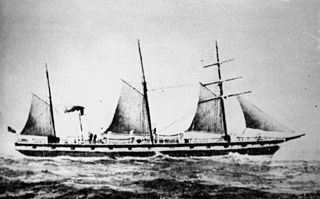 W
WThe SS Gothenburg was a steamship that operated along the British and then later the Australian and New Zealand coastlines. In February 1875, Gothenburg left Darwin, Australia and while en route to Adelaide it encountered a cyclone-strength storm off the north Queensland coast. The ship was wrecked on the Great Barrier Reef north-west of Holbourne Island on 24 February 1875. Survivors in one of the lifeboats were rescued two days later by Leichhardt, while the occupants of two other lifeboats that managed to reach Holbourne Island were rescued several days later. Twenty-two men survived, while between 98 and 112 others died, including a number of high-profile civil servants and dignitaries.
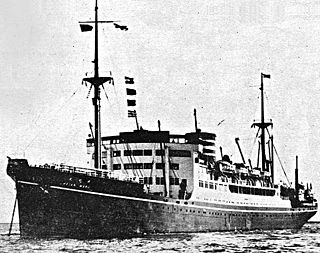 W
WHeian Maru (平安丸) was a Japanese ocean liner launched in 1930 and operated primarily on the NYK line's trans-Pacific service between Yokohama and Seattle. Shortly before the outbreak of the Pacific War, it was requisitioned by the Imperial Japanese Navy and converted to use as an auxiliary submarine tender. In 1944 it was sunk by American aircraft at Chuuk Lagoon during Operation Hailstorm. Its submerged hulk – the largest of Chuuk's "Ghost Fleet" – remains a popular scuba diving destination.
 W
WHMS Hermes was a British aircraft carrier built for the Royal Navy and was the world's first ship to be designed as an aircraft carrier, although the Imperial Japanese Navy's Hōshō was the first to be launched and commissioned. The ship's construction began during the First World War but not completed until after the end of the war, delayed by multiple changes in her design after she was laid down. After she was launched, the Armstrong Whitworth shipyard which built her closed, and her fitting out was suspended. Most of the changes made were to optimise her design, in light of the results of experiments with operational carriers.
 W
WThe Hilma Hooker is a shipwreck in Bonaire in the Caribbean Netherlands. It is a popular wreck diving site.
 W
WKizugawa Maru, or Kitsugawa Maru, is a World War II-era Japanese water tanker sunk in Apra Harbor, Guam. Damaged by a submarine torpedo attack off Guam on April 8, 1944, she was towed into port for repairs. In port, she was further damaged in three separate U.S. air attacks during the Mariana and Palau Islands campaign. Deemed irreparable, Kizugawa Maru was scuttled by shore guns on June 27, 1944. The shipwreck is now a deep recreational diving site.
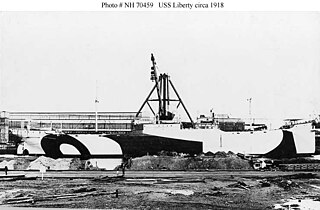 W
WUSAT Liberty was a United States Army cargo ship torpedoed by Japanese submarine I-166 in January 1942 and beached on the island of Bali, Indonesia. She had been built as a Design 1037 ship for the United States Shipping Board in World War I and had served in the United States Navy in that war as animal transport USS Liberty (ID-3461). She was also notable as the first ship constructed at Federal Shipbuilding, Kearny, New Jersey. In 1963 a volcanic eruption moved the ship off the beach, and Liberty's wreck is now a popular dive site.
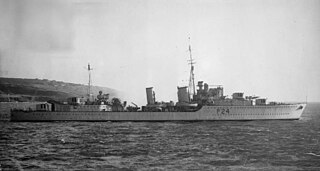 W
WHMS Maori was a Tribal-class destroyer named after the indigenous Māori people of New Zealand. She served with the United Kingdom Mediterranean Fleet during World War II until she was bombed and sunk by German aircraft while at Malta in 1942. Her wreck was later raised and scuttled outside the Grand Harbour. The wreck is now a dive site.
 W
WMaori was a British refrigerated cargo steamship built in 1893 by C.S. Swan & Hunter of Wallsend-on-Tyne for Shaw, Saville & Albion Co. of London with intention of transporting frozen meat and produce from Australia and New Zealand to the United Kingdom. The vessel stayed on this trade route through her entire career. In August 1909 while on one of her regular trips, she was wrecked on the coast of South Africa with the loss of thirty two of her crew.
 W
WSS Mauna Loa was a steam-powered cargo ship of the Matson Navigation Company that was sunk in the bombing of Darwin in February 1942. She was christened SS West Conob in 1919 and renamed SS Golden Eagle in 1928. At the time of her completion in 1919, the ship was inspected by the United States Navy for possible use as USS West Conob (ID-4033) but was neither taken into the Navy nor commissioned.
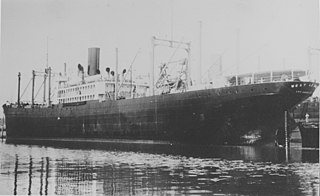 W
WThe USAT Meigs was a United States Army transport ship that was built in 1921 and sunk in Darwin Harbour in the first Japanese air raid against the Australia mainland on 19 February 1942.
 W
WMS Mikhail Lermontov was an ocean liner owned by the Soviet Union's Baltic Shipping Company, built in 1972 by V.E.B. Mathias-Thesen Werft, Wismar, East Germany. It was later converted into a cruise ship. On 16 February 1986 she collided with rocks near Port Gore in the Marlborough Sounds, New Zealand, and sank, claiming the life of one of her crew members.
 W
WUSS Mizpah (PY-29) was a United States Navy patrol yacht. Constructed in 1926, the vessel was constructed as the pleasure yacht Savarona. In 1929 it was renamed Allegro and then Mizpah for use on the Great Lakes. The vessel was acquired by the United States Navy in 1942 and converted to a warship and commissioned the same year. Mizpah served as a convoy escort along the United States East Coast before becoming a school ship in 1944. Following the end of the war, the vessel returned to private operation in 1946 until 1967 when Mizpah was laid up with a broken crankshaft at Tampa, Florida. An attempt to save the ship proved futile and Mizpah was scuttled off the coast of Florida as an artificial reef in 1968. The wreck is now a popular dive site.
 W
WThe Japanese destroyer Oite was one of nine Kamikaze-class destroyers built for the Imperial Japanese Navy during the 1920s.During the Pacific War, she participated in the Battle of Wake Island in December 1941 and the occupations of New Guinea and the Solomon Islands in early 1942.
 W
WHMS Prince of Wales was a King George V-class battleship of the Royal Navy that was built at the Cammell Laird shipyard in Birkenhead, England. She had an extensive battle history, first seeing action in August 1940 while still being outfitted in her drydock when she was attacked and damaged by German aircraft. In her brief but storied career, she was involved in several key actions of the Second World War, including the May 1941 Battle of the Denmark Strait where she scored three hits against the German battleship Bismarck, forcing Bismarck to abandon her raiding mission and head to port for repairs. Prince of Wales later escorted one of the Malta convoys in the Mediterranean, and then attempted to intercept Japanese troop convoys off the coast of Malaya as part of Force Z when she was sunk on 10 December 1941, two days after the attack on Pearl Harbor.
 W
WHMS Repulse was one of two Renown-class battlecruisers built for the Royal Navy during the First World War. Originally laid down as an improved version of the Revenge-class battleships, her construction was suspended on the outbreak of war because she would not be ready in time. Admiral Lord Fisher, upon becoming First Sea Lord, gained approval to resume construction as a battlecruiser that could be built and enter service quickly. The Director of Naval Construction (DNC), Eustace Tennyson-d'Eyncourt, quickly produced an entirely new design to meet Admiral Lord Fisher's requirements and the builders agreed to deliver the ship in 15 months. They did not quite meet that ambitious goal, but the ship was delivered a few months after the Battle of Jutland in 1916. Repulse and her sister ship Renown, were the world's fastest capital ships upon completion.
 W
WRMS Rhone was a UK Royal Mail Ship owned by the Royal Mail Steam Packet Company (RMSP). She was wrecked off the coast of Salt Island in the British Virgin Islands on 29 October 1867 in a hurricane, killing 123 people. She is now a popular Caribbean wreck dive site.
 W
WThe Salem Express was a passenger ship that sank in the Red Sea. It is notable due to the heavy loss of life which occurred when she sank shortly after striking a reef at around 11:13pm on Saturday December 14th, 1991.
 W
WSS Thistlegorm was a British armed Merchant Navy ship built in 1940 by Joseph Thompson & Son in Sunderland, England. She was sunk by German bombers on 6 October 1941 near Ras Muhammad in the Red Sea and is now a well known diving site.
 W
WThe Tokai Maru was a Japanese passenger-cargo ship built by the Mitsubishi Heavy Industries shipyard that was sunk in Apra Harbor, Guam, in 1943, during World War II. It had served as a fast ship service between New York City and Japan for Osaka Shosen Co. before World War II; during the war it was used as a military transport ship for the Imperial Japanese Navy.
 W
WTulagi, less commonly known as Tulaghi, is a small island — 5.5 by 1 kilometre, area 2.08 square kilometres (0.80 sq mi) — in the Solomon Islands, just off the south coast of Ngella Sule. The town of the same name on the island was the capital of the British Solomon Islands Protectorate from 1896 to 1942 and is today the capital of the Central Province. The capital of what is now the state of Solomon Islands moved to Honiara, Guadalcanal, after World War II.
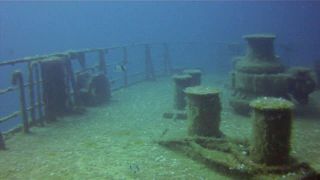 W
WUm El Faroud was a 5,390 DWT Libyan-owned single screw motor tanker. Following a gas explosion during maintenance work in 1995, she was scuttled off the coast of Malta as an artificial reef and diving attraction.
 W
WWardang Island, also known as Waralti is a low-lying 20 km2 island in the Spencer Gulf close to the western coast of the Yorke Peninsula, South Australia. It acts as a natural breakwater, protecting the former grain port of Port Victoria and providing a sheltered anchorage. After European colonisation it was used for the grazing of sheep, for rabbit disease research, was quarried for lime to supply the lead smelter at Port Pirie and is currently leased to the island's traditional owners: the Narungga. The much smaller Goose Island and the other rocks and islets in the Goose Island Conservation Park lie off the northern end. Anyone seeking to visit the island must obtain prior permission from the Point Pearce Community Council.
 W
WSS Washingtonian was a cargo ship launched in 1913 by the Maryland Steel Company of Sparrows Point, Maryland, near Baltimore, as one of eight sister ships for the American-Hawaiian Steamship Company. At the time of her launch, she was the largest cargo ship under American registry. During the United States occupation of Veracruz in April 1914, Washingtonian was chartered by the United States Department of the Navy for service as a non-commissioned refrigerated supply ship for the U.S. fleet stationed off the Mexican coast.
 W
WTSS Waterford was a passenger vessel built for the Great Western Railway in 1912. The ship was sold in 1924 and became the Philippine merchant ship Panay which was sunk by Japanese aircraft in 1942.
 W
WThe Whitefish Point Underwater Preserve was established in 1987 to protect and conserve shipwrecks and historical resources on 376 square miles (970 km2) of Lake Superior bottomlands in Whitefish Bay and around Whitefish Point, Michigan. The formation of the Michigan Underwater Preserves helped stop controversy over artifact removal from shipwrecks of this area. The preserve is now known for deep, well preserved shipwrecks in clear water accessible to scuba divers with technical skill and experience. The preserve is one of the last places in the Great Lakes to observe shipwrecks without zebra mussel encrustation.
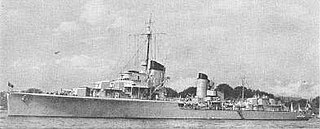 W
WThe German destroyer Z2 Georg Thiele was one of four Type 1934-class destroyers built for the German Navy (Kriegsmarine) during the mid-1930s. She was named after Georg Thiele, a Korvettenkapitän who commanded the Seventh Half Flotilla of torpedo boats. Completed in 1937, two years before the start of World War II, the ship spent most of her time training although she did participate in the occupation of Memel in early 1939.
 W
WZ19 Hermann Künne was one of six Type 1936 destroyers built for the Kriegsmarine in the late 1930s. Completed at the beginning of 1939, the ship spent most of her time training although she did participate in the occupation of Memel a few months later. At the beginning of World War II in September, she was initially deployed to lay minefields off the German coast, but was soon transferred to the Skagerrak where she inspected neutral shipping for contraband goods. In late 1939, Z18 Hans Lüdemann helped to laid four offensive minefields off the English coast that claimed two British destroyers and thirty-eight merchant ships.
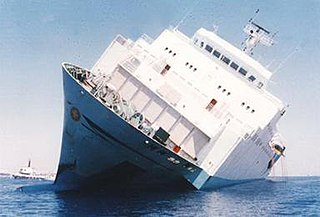 W
WMS Zenobia was a Swedish built Challenger-class RO-RO ferry launched in 1979 that capsized and sank in the Mediterranean Sea, close to Larnaca, Cyprus, in June 1980 on her maiden voyage. She now rests on her port side in approximately 42 meters (138 ft) of water and was named by The Times, and many others, as one of the top ten wreck diving sites in the world.